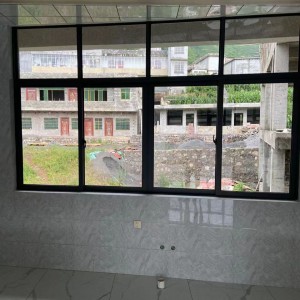When you‘ve finished looking for a company to install windows for your home,the next step is ofcourse the most important-the installation process. But what exactly goes into window glass installation in a home? This article will attempt to answer that question.
Make Suer You’re Hiring the Best
First of all,when hiring a contractor to install a window, make sure that they meet the highest standards in the industry. The American Architectural Manufacturers Assciation (AAMA) runs a training and certification program for installers of windows and exterior glass doors. It‘s called the Installation Masters program. More than 12,000 contractors currently carryh the Installation Masters certificate. The program aims to teach window and door installers the best practices and installation techniques basen on established industry standards. It allures consumers that the installer has been trained and has passed a written test proving his knowledge of the subject area.
Measure the Window
After you’ve selected a qualified contractor,the next critical step in window installation is getting precise measurements of the openings for the windows in your home.Because nearly all replacement windows are manufactured to the exact specifications of the customer,it‘s important for the company doing the installation to get this step right.Proper measurements will ensure that the windows will fit exactly in the opening.That,in turn,ensures a weather-tight,long-lasting seal and protection from the elements.
The width of the rough opening should be measured at the top,middle and bottom.the height of the opening should be maeasured in the middle and at both sides.
To ensure a good fit, the outside dimensions of the window should be at least 3/4 of an inch thinner and a 1/2-inch shorter than the smallest width and height measurements, says This Old House general contractor Tom Silva.
Usually the contractor will schedule an appointment to visit your home and take these measurements.
Remove the Old Window
OK,the measurements have been taken,the order for new windows has been placed,and the replacement windows have arrived at the jobsite.Now it’s time to get to work.
If necessary,the installation company will probably be removing the older windows before replacing them.When they begin the work,they should take care at this step to make sure that they don‘t cut too far into the original weather barrier or house wrap,which usually consists of sheets of specially coated material that’s designed to keep water out of the walls.This is important,because they want to make sure that the new window can be integrated into the older weather barrier.
At this early stage,it‘s also important for the contractor to remove all traces of the sealants that held the old window in place so that the new sealants will adhere properly to the opening.
Weatherproof the Opening
This might be the most important step of the whole window-insallation process-and it’s one that is frequently done incorrectly.That can lead to expensive repairs and replacements. Brendan Welch of Parksite,a company that serves the building products industry,says about 60 percent of builders don’t understand the proper installation techniques for this process,called flashing.(Flashing is both a noun and a verb;it can refer to the materials used for weatherproofing a window,as well as the act of installing that material.)
One of the most important techniques for installing flashing is to put it on in “weatherboard fashion.” It means putting the flashing around a window from the bottom up. That way, when water hits it,it runs off the lower portion of your flashing. Overlapping the existing flashing pieces from the bottom going up directs water off of it instead of behind it.
Flashing carefully around the top and bottom of a window opening is important as well.Missteps at this point in the job can create a lot of problems.
David Delcoma of MFM Building Products,which manufactures flahing materials,says it‘s vital to waterproof the sill before putting the window in.He says inexperienced installers will put a window in and then use flashing tape on all four sides.That doesn’t give the water anywhere to go.
Another issue is flashing the header or the top of the opning.Tony reis of MFM Building Products says the installer must cut back the house wrap and put the tape on the substrate. A common mistake he sees is installers going over the house wrap. When they do that,they‘re basically creating a funnel.Any moisture that’s coming in behind in behind the house wrap will go right into the window.
Installing the Window
Silva says installers should use care to fold out the windows nailing fins before lifting the window to the opening.Then, they should set the window‘s sill into the bottom part of the rough opening. Next, they’ll gradually push the frame in until all the nailing fins are flush against the wall.
Post time: Jul-12-2023













